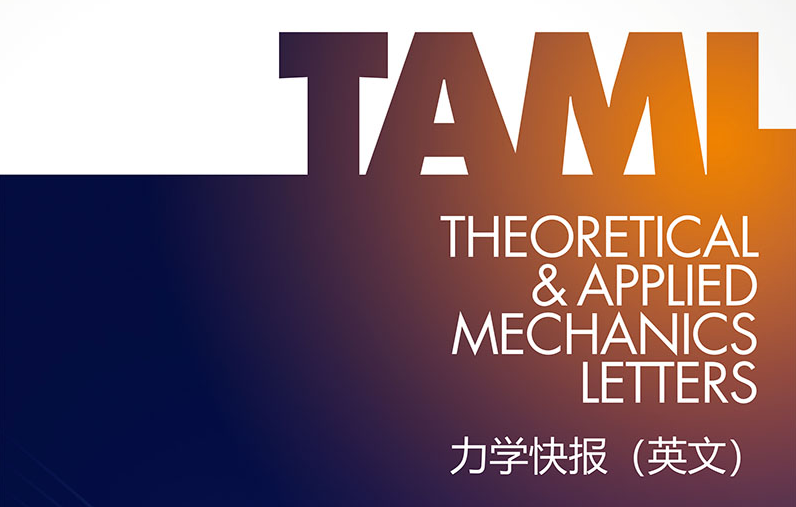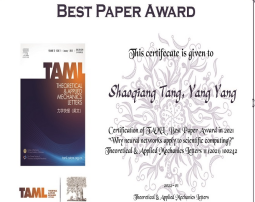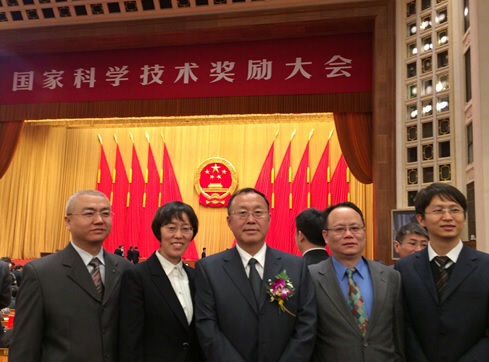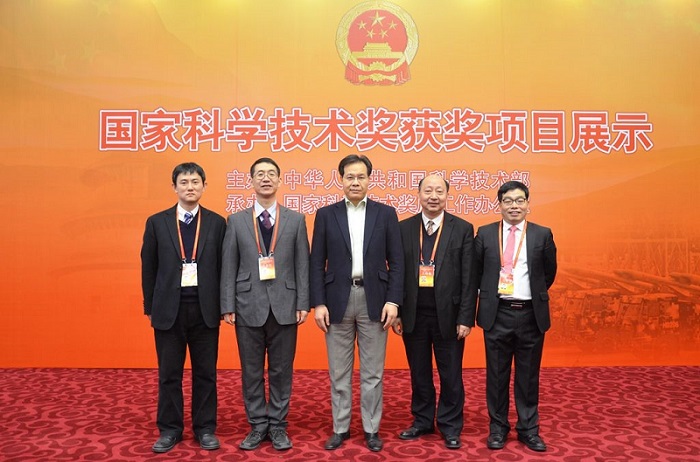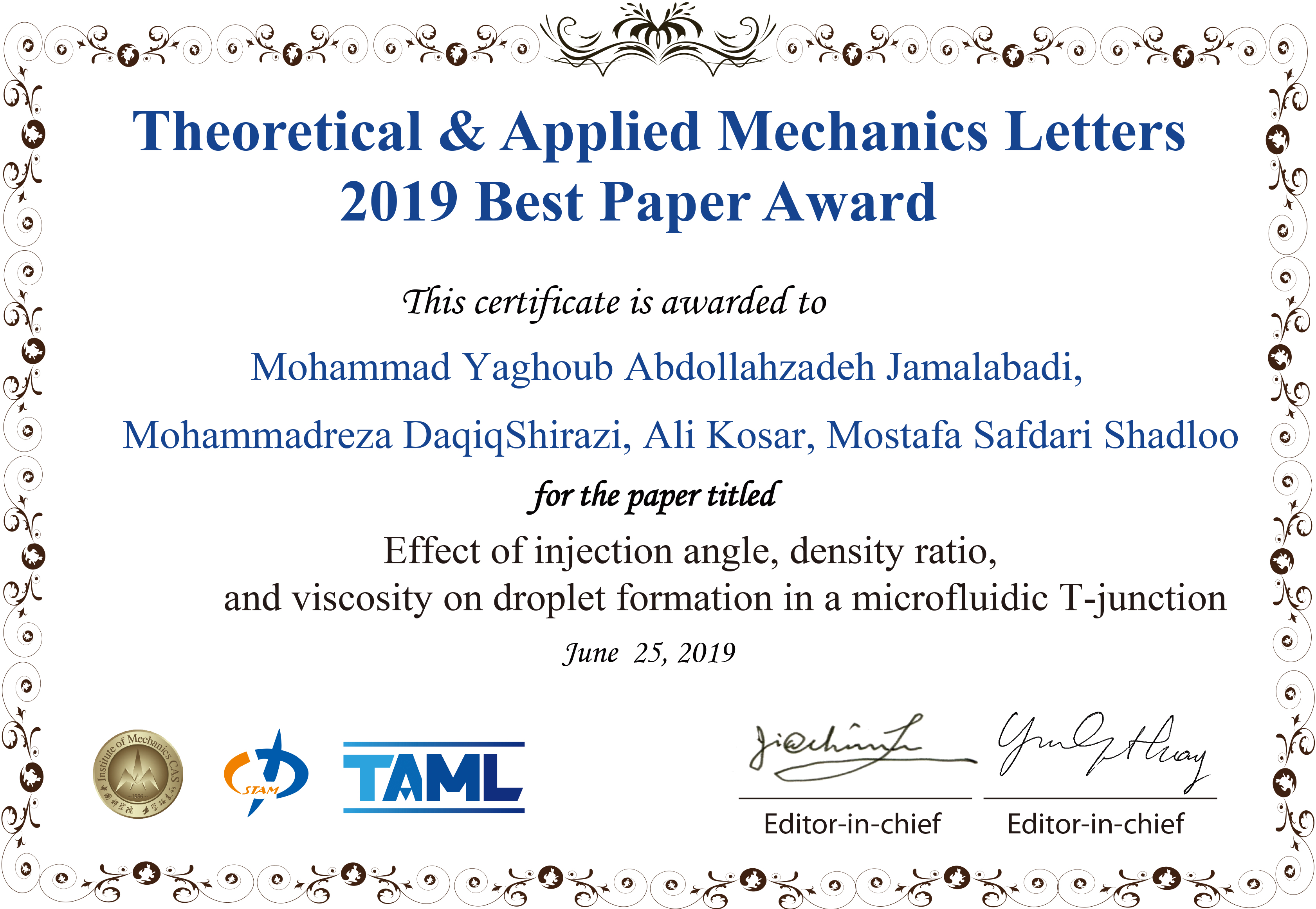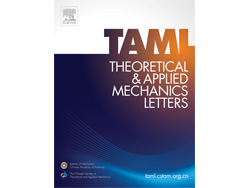Theoretical and Applied Mechanics Letters (TAML) and Elsevier are delighted to partner with the Chinese Society of Theoretical and Applied Mechanics, and the National Natural Science Foundation of China Basic Science Center Program for ‘Multiscale Problems in Nonlinear Mechanics’ to deliver the TAML Webinar Series. Each webinar will be centered around a TAML journal paper or a topic within the broader field of mechanics. Renowned academics and TAML authors will be invited to present their latest research findings and share their insights on how this new knowledge can shape the future of mechanics.
TAML Webinar Series @ISCMM 2024
23 September 2024
Symbolic regression for interpretable scientific discovery in fluid dynamics (educational lecture)
Date: 28th September 2024
Time: 8:30-9:15 (Beijing)
Presenter: Yaomin Zhao, Peking University, China
Host: Chong Pan, Beihang University, China
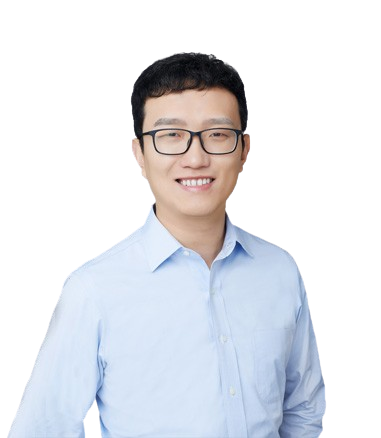
Abstract:
In this talk we first discuss the importance of symbolic regression for interpretable scientific discovery, in comparison to black-box machine learning methods. Thereafter, we provide an overview of different machine learning methods for symbolic regression, and discuss their advantages/disadvantages. In particular, we give a detailed introduction on genetic-based methods, which are most widely used for symbolic regression tasks. Furthermore, we showcase the application of symbolic regression methods in fluid dynamics, emphasizing development of turbulence closure models and identification of partial differential equations from noisy data. Finaly, we summarize continuing efforts to improve existing symbolic regression methods and further application of symbolic regression for more complex problems.
Building-block-flow closure model for computational fluids
Date: 28th September 2024
Time: 9:15-9:45 (Beijing)
Presenter: Adrian Lozano-Duran, California Institute of Technology, USA
Host: Chong Pan, Beihang University, China

Bio:
Adrian Lozano Duran is an Associate Professor at the California Institute of Technology, Galcit. He is also an Associate Visiting Professor at MIT AeroAstro. He received his Ph.D. in Aerospace Engineering from the Technical University of Madrid in 2015. From 2016 to 2020, he was a Postdoctoral Research Fellow at the Center for Turbulence Research at Stanford University. From 2021 to 2024 he was the Boeing Assistant Professor at MIT. His research is focused on computational fluid mechanics and physics of turbulence. His work includes causal inference, modeling and control for turbulence using information theory. He is also interested in closure models for large-eddy simulation for aerospace applications.
Abstract:
The predictive capabilities of computational fluid dynamics (CFD), critical for aerodynamic design, hinge on the development of accurate closure models. However, no practical model has emerged as universally applicable across the broad range of flow regimes of interest to the industry. We introduce a closure model for CFD, referred to as the Building-block Flow Model (BFM). The foundation of the model rests on the premise that a finite collection of simple flows encapsulates the essential physics necessary to predict more complex scenarios. The BFM is implemented using artificial neural networks and introduces five unique advancements within the framework of large-eddy simulation: (1) It is designed to predict multiple flow regimes (laminar flow, wall turbulence under zero, favorable, and adverse mean-pressure gradients, separation, statistically unsteady turbulence, and wall roughness effects); (2) It leverages information-theoretic dimensional analysis to select the most relevant non-dimensional input/output variables; (3) It ensures consistency with numerical schemes and gridding strategy by accounting for numerical errors; (4) It is directly applicable to arbitrary complex geometries; (5) It can be scaled up to model additional flow physics in the future if needed (e.g., shockwaves and laminar-to-turbulent transition). The BFM is utilized to predict key quantities of interest in a wide range of cases, such as turbine blades with roughness, speed bumps, and aircraft in landing configuration. In all cases, the BFM demonstrates similar or superior capabilities in terms of accuracy and computational efficiency compared to previous state-of-the-art closure models. We also discuss ongoing efforts to extend the model to supersonic and hypersonic flows with applications to Entry, Descent and Landing (EDL) vehicles.
Symbolic discovery of physical systems
Date: 28th September 2024
Time: 9:45-10:15 (Beijing)
Presenter: Hao Sun, Renmin University of China, China
Host: Yaomin Zhao, Beihang University, China
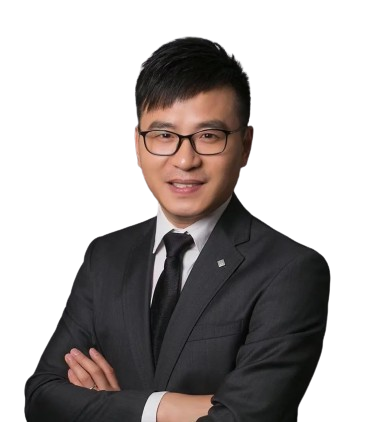
Bio:
Dr. Hao Sun is currently an Associate Professor with Tenure in the Gaoling School of Artificial Intelligence at Renmin University of China (RUC). He received his Ph.D. in Engineering Mechanics from Columbia University in 2014 and did his Postdoc training at MIT during 2014-2017. He was a Tenure-Track Assistant Professor at the University of Pittsburgh (2017-2018) and at Northeastern University (2018-2021) before joining RUC. His research interests lie in the fundamental theory, algorithms and interdisciplinary applications of AI for science, AI-enabled scientific computing, and scientific machine learning. He has published over 70 peer-reviewed articles in top-tiered journals (e.g., Nature Machine Intelligence, Nature Communications) and top computer science conferences (e.g., ICLR, NeurIPS, IJCAI). Dr. Sun has been a PI or a major Co-PI for dozens of research projects, with a total funding level of over 35 million RMB, sponsored by the National Natural Science Foundation of China, the U.S. National Science Foundation, Beijing Natural Science Foundation, etc. He has received several awards including the 2018 Forbes “30 Under 30”: Science, and the 2022 DeepTech Intelligent Computing Innovator Award of China.
Abstract:
Over the centuries, scientific discovery has never departed from the use of interpretable mathematical equations or analytical models to describe complex phenomena in nature. Pioneering scientists discovered that behind many sets of empirical data in the real world lay succinct governing equations or physical laws. Automated extraction of these natural laws from data, as a class of typical symbolic regression (SR) problems, stands at the forefront of data-driven scientific exploration in natural sciences and engineering applications. A grand challenge lies in the arduous search for parsimonious and generalizable mathematical formulas, in an infinite search space, while intending to fit the training data. To this end, this talk will introduce a series of new symbolic learning and reasoning methods to facilitate the process of data-driven discovery of physical systems (e.g., fluid flows, reaction-diffusion processes, turbulence friction, Feynman equations, etc.).
Generative modeling of complex stochastic spatiotemporal dynamics
Date: 28th September 2024
Time: 10:30-11:00 (Beijing)
Presenter: Jian-xun Wang, University of Notre Dame, USA
Host: Yaomin Zhao, Institute of Mechanics,Chinese Academy of Sciences, China
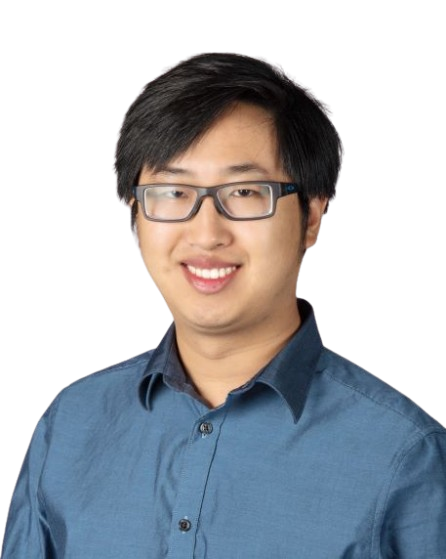
Bio:
Dr. Jian-Xun Wang is Robert W. Huether Collegiate Professor of Aerospace Engineering in the Department of Aerospace and Mechanical Engineering at the University of Notre Dame (https://engineering.nd.edu/faculty/jian-xun-wang/). He earned his Ph.D. in Aerospace Engineering from Virginia Tech in 2017 and worked as a Postdoctoral Scholar at UC Berkeley before joining Notre Dame in 2018. Dr. Wang has a multidisciplinary research background that spans Scientific Machine Learning, Data Assimilation, Bayesian Computing, Uncertainty Quantification, and Computational Fluid Dynamics. His research focuses on the in-depth integration of advanced AI/ML techniques with physics-based mathematical models and classic numerical methods, aiming to revolutionize the field of computational modeling in the era of "big data" and significantly enhance the predictive simulation capabilities. He has led research projects sponsored by multiple agencies, including NSF, ONR, NIH, AFSOR, DARPA, Google, and others. Dr. Wang is a recipient of the 2021 NSF CAREER Award and the 2023 ONR YIP Award. He is also an elected vice chair of the US Association for Computational Mechanics (USACM) Technical Thrust Area on Data-Driven Modeling.
Abstract:
Modeling complex stochastic spatiotemporal dynamics, such as turbulent flows, is challenging due to their chaotic and random nature. Traditional numerical simulations, like eddy-resolved methods, offer detailed insights but are computationally expensive and limited in scalability. While deep learning-based surrogate models have emerged as alternatives, they often struggle to capture the inherent stochasticity of these dynamics due to their deterministic frameworks. This study introduces the Conditional Neural Field-Based Latent Diffusion (CoNFiLD) Model, a novel generative framework designed to effectively model complex spatiotemporal dynamics. CoNFiLD integrates a conditional neural field with a latent diffusion model, leveraging probabilistic diffusion processes for memory-efficient generation of diverse dynamics. The framework employs Bayesian posterior conditional sampling, enabling the unconditional model to generate conditioned outputs across various scenarios without retraining, enhancing adaptability and versatility. Through rigorous numerical experiments, CoNFiLD demonstrates its effectiveness in replicating stochastic and chaotic dynamics, such as turbulence, overcoming the limitations of conventional deep learning models. The results underscore the model’s potential as a robust, efficient, and scalable approach for simulating complex spatiotemporal phenomena, setting a new standard in generative modeling for stochastic systems.
High-fidelity multi-physics modeling of additive manufacturing: process, microstructure, and property
Date: 28th September 2024
Time: 11:00-11:30 (Beijing)
Presenter: Wentao Yan, National University of Singapore, Singapore
Host: Xinlei Zhang, Institute of Mechanics,Chinese Academy of Sciences, China
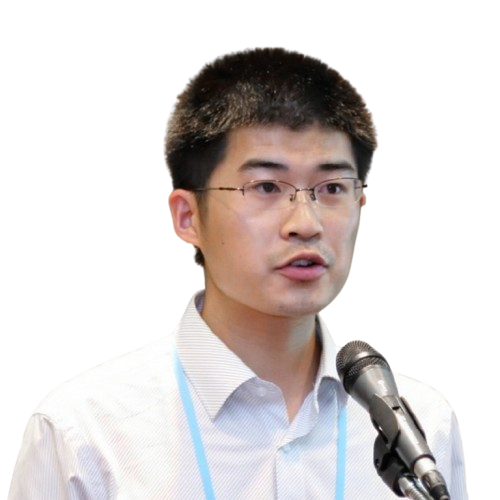
Bio:
Dr. Wentao Yan has been an assistant professor in the Department of Mechanical Engineering, National University of Singapore (NUS) since 2018. Supported by multi-million grants, his research group with 20+ students focus on multi-scale multi-physics modeling, experimental investigation and data analysis of additive manufacturing. His team was the biggest winner in the 2022 NIST AM-Bench Simulation Challenges by winning 9 awards in the total 25 tests (totally 40 awards were presented). He has published ~ 110 papers on flagship journals, such as Nature Communications, Acta Materialia, JMPS and CMAME, which have received over 5000 citations. He has delivered more than 80 invited talks on international conferences and prestigious universities. 20 of his former students have got faculty positions, including all the 10 former postdocs. Before joining NUS, Dr. Yan was a postdoctoral fellow at Northwestern University and also a guest researcher at the National Institute of Standards and Technology in the USA. He received his Ph.D. degree jointly at Tsinghua University, Beijing and Northwestern University, USA. He got his Bachelor degree from the Department of Mechanical Engineering, Tsinghua University, Beijing in 2012.
Abstract:
The wide applications of additive manufacturing are hindered by the lack of comprehensive understanding of process-structure-property relationships. To this end, we have developed and seamlessly integrated a series of high-fidelity multi-physics models. Specifically, multiphase flow models using the coupled computational fluid dynamics and discrete element method simulate the powder spreading procedure and powder spattering and denudation phenomena in the powder melting procedure. The powder melting model is powerful to reproduce the molten pool flow and relevant defects (e.g., lack-of-fusion and keyhole pores) by incorporating the major physical factors, e.g., the composition-dependent evaporation and physically-informed heat source models. The microstructure evolutions at both the grain- and dendrite- scales are modelled using the phase field and cellular automaton methods. The mechanical properties and thermal stresses are simulated using the crystal plasticity finite element model, which incorporates the realistic geometry (rough surfaces and voids), temperature profiles and microstructures. These models have proven powerful in revealing the physical mechanisms and optimizing the manufacturing processes, which have been well validated against various experiments, particularly in-situ observations.
Learning reduced-complexity models for nonlinear dynamical systems from data
Date: 28th September 2024
Time: 11:30-12:00 (Beijing)
Presenter: Shaowu Pan, Rensselaer Polytechnic Institute, USA
Host: Xinlei Zhang, Institute of Mechanics,Chinese Academy of Sciences, China
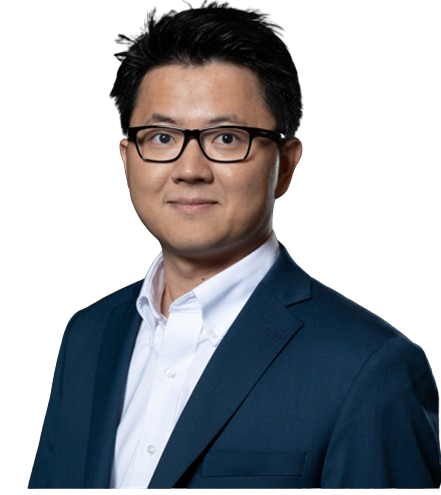
Bio:
Shaowu Pan is currently a tenure-track assistant professor in the Department of Mechanical, Aerospace, and Nuclear Engineering at RPI starting from 2022 Fall. He is also affiliated with the Rensselaer-IBM Artificial Intelligence Research Collaboration (AIRC). He received M.S. and Ph.D. in Aerospace Engineering and Scientific Computing from the University of Michigan, Ann Arbor in April 2021. Then he started as a Postdoctoral Scholar in the AI Institute in Dynamic Systems at the University of Washington, Seattle from 2021 to 2022. His research interests are scientific machine learning for large-scale PDE systems and operator-theoretic modeling and control of nonlinear systems.
Abstract:
Nonlinear dynamical systems are ubiquitous in science and engineering. While high-fidelity models based on first principle has been well established, reduced-complexity models are of particular interest in recent years due to its feasibility for many-query tasks, e.g., uncertainty propagation, optimal control and design. In this talk, I will discuss two recent works from my group at RPI in this theme. For the first half, I will talk about learning reduced complexity models in the light of learning Koopman operator for control. We highlight our solutions to address several issues when standard algorithm is applied, e.g., noisy data, instability, efficient curation of training data, choice of observables. We demonstrate the benefits of our proposed framework on model predictive control of a Koopman-based surrogate model for CartPole problem. For the second half, I will talk about learning reduced complexity models in the light of surrogate model of time-dependent partial differential equations from data. In contrast to existing frameworks, our model ensures stability of learned surrogate model through a stable parametrization of Koopman operator and trapping theorem of linear quadratic dynamics. Moreover, our model is agnostic to mesh, scalable to 3D problems and could only require a few sensor measurement during inference stage. We demonstrate the benefits of our model over several state-of-the-art neural operator frameworks on 2D wave propagation, 2D Navier-Stokes in a periodic box, shallow water equations.
10 September 2024
Line defects in Nematic Liquid Crystals as Charged Elastic Rods with Negative Twist-Stretch Coupling
Date: 23rd September 2024
Time: 15:00-16.00 (Beijing)
Presenter: Dr. Rui Zhang, Hong Kong University of Science and Technology (HKUST)
Host: Dr. Xikai Jiang, Institute of Mechanics, Chinese Academy of Sciences, China
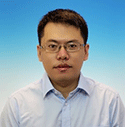
Bio:
Dr. ZHANG Rui is currently an Assistant Professor of Physics at Hong Kong University of Science and Technology (HKUST). Before joining HKUST, he was a Distinguished Research Associate at the Pritzker School of Engineering at the University of Chicago. Prior to that, he did a PhD at the Levich Institute of Physio-Chemical Hydrodynamics at City College of New York. He obtained his B.S. in Physics from Fudan University. Dr Zhang is a Computational Soft Matter Physicist specializing in active matter, liquid crystals, and nanofluidics. He has published as the first or corresponding author in many top journals, including Nature Materials, Nature Reviews Materials, PRL, PNAS, Nature Communications, and Science Advances. He is currently serving on the Executive Committee of the Physical Society of Hong Kong.
Abstract:
Topological defects are a ubiquitous phenomenon in diverse physical systems. In nematic liquid crystals (LCs), they are dynamic, physicochemically distinct, sensitive to stimuli, and are thereby promising for a range of applications. However, our current understanding of the mechanics and dynamics of defects in nematic LCs remain limited and are often overwhelmed by the intricate details of the specific systems. Here, we unify singular and nonsingular line defects as superelastic rods and combine theory, simulation, and experiment to quantitatively measure their effective elastic moduli, including line tension, torsional rigidity, and twist-stretch coefficient. Interestingly, we found that line defects exhibit a negative twist-stretch coupling, meaning that twisted line defects tend to unwind under stretching, which is reminiscent of DNA molecules. A patterned nematic cell experiment further confirmed the above findings. Taken together, we have established an effective elasticity theory for nematic defects, paving the way towards understanding and engineering their deformation and transformation in driven and active nematic materials.
5 August 2024
Study of Particle-Turbulence Interactions Using Fully-Resolved Simulations Based on the Lattice Boltzmann Method: Review and Recent Progress
Date: 19th August 2024
Presenter: Dr. Cheng Peng, Shandong University, China
Host: Professor Lian-Ping Wang, Mechanics and Aerospace Engineering, Southern University of Science and Technology, China
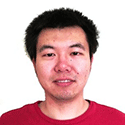
Bio:
Dr. Cheng Peng earned his Ph.D. from the University of Delaware in 2018. Following a postdoctoral research position at Penn State University, he joined Shandong University as a professor in 2020. Dr. Peng’s research focuses on multiphase flow phenomena, particularly turbulent flows laden with solid particles. He developed fully-resolved simulation methods based on the lattice Boltzmann method and applied these methods to analyze the intricate interactions between various types of turbulent flows with finite-size particles. He has published over 40 journal papers on the lattice Boltzmann method and the physics and modeling of particle-laden turbulent flows, with many appearing in prestigious journals such as the Journal of Fluid Mechanics, the Journal of Computational Physics, and Physical Review E.
Abstract:
Turbulent flows laden with particles play crucial roles in both natural phenomena and engineering applications. When the sizes of these particles approach or exceed the Kolmogorov scale, they are known as finite-size particles and can significantly alter flow dynamics and turbulence statistics. Fully-resolved simulations offer the most robust approach to elucidate the momentum and energy exchange between turbulent carriers and dispersed particles. Over the past decade, we have developed a reliable fully-resolved method using the interpolated bounce-back lattice Boltzmann approach. This method has been instrumental in studying particle-turbulence interactions across various turbulent flow scenarios. This presentation reviews the key features of our methodology and presents recent progress in its applications.
4 August 2024
Investigation and control of turbulent flows
Date: 30th July 2024
Presenter: Dr. Sina Ghaemi, University of Alberta, Canada
Host: Dr. Xingjun Fang, The Institute of Mechanics, Chinese Academy of Sciences, China
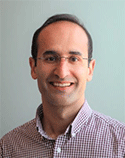
Bio:
Dr. Sina Ghaemi is a professor at the Department of Mechanical Engineering of the University of Alberta. He completed a PhD in Aerodynamics from the Delft University of Technology in 2013, an MSc in Mechanical Engineering from the University of Alberta in 2009, and a BSc in Aerospace Engineering from the Sharif University of Technology in 2006. His research activities encompass fundamentals of turbulent flows, drag reduction, active control of turbulence, and aerodynamics.
Abstract:
Thermofluid systems play a vital role in modern life, meeting our daily needs. Over the last decades, efforts to enhance the efficiency of these systems have primarily focused on optimizing designs through numerical and experimental techniques. To push efficiency boundaries further, developing new turbulence control techniques are essential. In my presentation, I will discuss two projects centered on developing active and passive turbulence control: (a) active deformable surfaces for the control of turbulent boundary layers and (b) reduction of friction in liquid pipe flows using drag-reducing additives.
16 July 2024
Analytical solutions to the elastic deformation of deflected and branched cracks
Date: 16th July 2024
Presenter: Professor Yujie Wei, The Institute of Mechanics, Chinese Academy of Sciences, China
Language: Chinese
Host: Professor Zhigang Suo, Allen E. and Marilyn M. Puckett Professor of Mechanics and Materials, Harvard University, the United States

Bio:
Dr. Yujie Wei received his B.S. degree in Mechanics from Beijing University in 1997, an M.S. degree in Solid Mechanics from the Institute of Mechanics, Chinese Academy of Sciences in 2000, and a Ph.D. in Applied Mechanics from the Massachusetts Institute of Technology in 2006. After completing two years of post-doctoral research at Brown University, he joined the University of Alabama as an Assistant Professor. In 2012, he returned to the Institute of Mechanics, Chinese Academy of Sciences, where he has served as a Professor since then.
Abstract:
Dr. Wei’s research focuses on the strength of solids and their plastic deformation mechanisms, aiming to establish the relationship between macroscopic mechanical properties and the microscale structures of materials. He is also interested in employing advanced computational techniques and big data analytics for structural health analysis of large-scale complex systems, such as high-speed trains. Dr. Wei has authored numerous papers as the lead or corresponding author in prestigious journals, including Nature, Nature Materials, Nature Communications, PNAS, PRL, Nano Letters, Journal of the Mechanics and Physics of Solids, Advanced Materials, Acta Materialia, among others. He is the recipient of the NSFC Outstanding Young Investigator Award (2014).
30 May 2024
Mechanics, heterogeneity, and dynamics of particle network in battery materials
Date: 26th June 2024
Presenter: Dr. Kejie Zhao, Purdue University, USA
Host: Dr. Changqing Chen, Tsinghua University, China
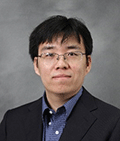
Bio:
Dr. Kejie Zhao is a Professor of Mechanical Engineering and University Faculty Scholar at Purdue University. He received his PhD degree in Engineering Science in 2012 from Harvard University, and bachelor’s and master’s degrees from Xi’an Jiaotong University in 2005 and 2008, respectively. He worked as a postdoctoral associate at MIT in 2012-2014. His group focuses on materials science and chemistry of energy storage materials using experimentation and multi-scale modeling approaches. He is a recipient of the NSF CAREER Award, Extreme Mechanics Letters Young Investigator Award, 3M Non-tenured Faculty Award, Energy Storage Materials Young Scientist Award, James W. Dally Young Investigator Award from the Society for Experimental Mechanics, and B.F.S. Schaefer Scholar at Purdue University.
Abstract:
This talk focuses on the interplay of mechanics with chemical reactions across multiple scales in redox active materials. I will use battery materials to introduce how electrochemistry induces deformation, stresses, and mechanical damage, and how mechanical stresses regulate charge transfer, mass diffusion, capacity, and voltage. I will introduce the customized operando nanoindentation and its use to inform the thermodynamics and kinetics of Li reactions in amorphous Si. I will introduce in-situ optical microscopy as a laboratory tool to map the spatial composition heterogeneity in a solid-solution cathode. We develop computational models by integrating electrochemical response and mechanical failure in battery cells. The multiscale modeling will discuss the heterogeneous chemical activity and heterogeneous mechanical damage in commercial composite electrodes. I will discuss dynamic equilibrium in the particulate network and the relationship between mechanical damage and electrochemical metrics of voltage, capacity, and cyclic efficiency in cells.
29 May 2024
The physics of turbulent flows coupled with phase transition
Date: 11th June 2024
Presenter: Prof. Chao Sun, Tsinghua University, China
Language: Chinese
Host: Prof. Chung King Law, Princeton University, USA
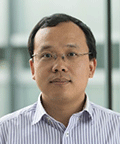
Bio:
Chao Sun is a Professor and New Cornerstone Investigator at Tsinghua University in China, holding positions at the Center for Combustion Energy, the Department of Energy and Power Engineering, and the College of Aerospace Engineering. Additionally, he serves as a part-time professor at the University of Twente in the Netherlands. He obtained his PhD from the Chinese University of Hong Kong in 2006. Between 2009 and 2015, he was a faculty member at the University of Twente, after which he assumed a full professor role at Tsinghua University in 2015. His research interests encompass multiphase flows, turbulence, bubbles and droplets, as well as heat and mass transfer. He has authored over 200 publications in refereed scientific journals, including two review articles for Annual Reviews. Chao Sun was a plenary lecturer for the 10th International Conference on Multiphase Flow and a keynote speaker for the 15th European Turbulence Conference. He is a fellow of the American Physical Society and a recipient of the Xplorer Prize and New Cornerstone Investigator Program. Currently, he is an Associate Editor for Physical Review Fluids and serves on the editorial boards of the International Journal of Multiphase Flow, Acta Mechanica Sinica, Experiments in Fluids, and several other journals. Additionally, he is a Governing Board Member of the International Conference on Multiphase Flow.
Abstract:
In this talk, Chao Sun will discuss two problems related to turbulent flows coupled with phase transition. The first problem concerns convective flow coupled with icing or melting in water bodies. We investigate the solidification process of freshwater, properly considering phase transition, water density anomaly, and the real physical properties of ice and water phases, which are essential for correctly predicting the different qualitative and quantitative behaviors. We identify four distinct flow-dynamics regimes with increasing thermal driving, where different levels of coupling among the ice front and stably and unstably stratified water layers occur. Despite the complex interaction between the ice front and fluid motions, remarkably, the average ice thickness and growth rate can be well captured with a theoretical model. We also experimentally investigate the complete freezing process of water with dissolved salt. We identify possible modes of heat transport and emphasize the role of brine convection through the mushy ice in influencing icing dynamics. The second problem involves convective flow with a boiling boundary. We have conceptualized a kind of ‘active particle’ turbulence, which far exceeds the limits of classical thermal turbulence. By adding a minute concentration of a heavy liquid to a water-based turbulent convection system, remarkably efficient biphasic dynamics emerge. We find that the heat transfer enhancement is dominated by the kinematics of the active elements and their induced agitation.
29 May 2024
A perspective on machine learning modeling of wind farm flows and operations
Date: 14th May 2024
Presenter: Dr. Giacomo Valerio Iungo, Associate Professor, University of Texas, Dallas, USA
Host: Dr. Xiaolei Yang, Institute of Mechanics, Chinese Academy of Sciences, China
Recommend reading:
A call for enhanced data-driven insights into wind energy flow physics
Bio:
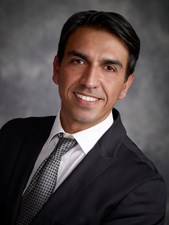
Giacomo Valerio Iungo received a Ph.D. in Aerospace Engineering in 2007 from the University of Pisa, Italy (in collaboration with the CSIR, Pretoria, Rep. South Africa). The contribution of his research activity was recognized by the special mention for the 2010 IAWE-ANIV prize as the best Italian junior researcher in wind engineering. In the period 2010-2014, he was a scientist at EPFL, where he performed wind energy research. In 2014, he was appointed as Assistant Professor at the University of Texas at Dallas, then Associated Professor with Tenure in 2020. As principal investigator of the WindFluX laboratory, he is actively working in the wind energy domain to develop state-of-the-art facilities, such as a boundary layer wind tunnel and a mobile wind LiDAR station. His research interests lie in understanding the organization of turbulent coherent structures in the atmospheric boundary layer and developing data-driven models to simulate accurately the operations of wind turbines with relatively low computational costs. The research of Dr. Iungo has been funded by the National Science Foundation, the US Department of Energy, ARPA-E, National Renewable Energy Laboratory, Gulf of Mexico Research Initiative, Pacific Northwest National Laboratory, and several industrial partners. Dr. Iungo received a CAREER award in Fluid Dynamics from the National Science foundation in 2020.
Abstract:
With the increased availability of experimental measurements aiming at probing wind resources and wind turbine operations, machine learning (ML) models are poised to advance our understanding of the physics underpinning the interaction between the atmospheric boundary layer and wind turbine arrays, the generated wakes and their interactions, and wind energy harvesting. However, the majority of the existing ML models for predicting wind turbine wakes merely recreate CFD-simulated data with analogous accuracy but reduced computational costs, thus providing surrogate models rather than enhanced data-enabled physics insights. Although ML-based surrogate models are useful to overcome current limitations associated with the high computational costs of CFD models, using ML to unveil processes from experimental data or enhance modeling capabilities is deemed a potential research direction to pursue. Recent achievements in the realm of ML modeling of wind turbine wakes and operations, along with new promising research strategies will be discussed.
28 May 2024
Data-driven Clustering Analysis Method: from Linear to Nonlinear Regimes
Date: 16th May 2024
Presenter: Dr. Shaoqiang Tang, Boya Distinguished Professor, Peking University, China
Host: Academician Guowei He, Institute of Mechanics, Chinese Academy of Sciences, China
Watch the recording (in Chinese)
Recommend reading:
Displacement reconstruction and strain refinement of clustering-based homogenization
Clustering solver for displacement-based numerical homogenization

Bio:
Shaoqiang Tang is currently Boya Distinguished Professor in Peking University. Under the support of NSFC Basic Science Research Center and other projects, he has worked on computational mechanics and applied mathematics for more than three decades, and contributed to the topics of concurrent multiscale computation algorithms with a focus on numerical boundary treatments, numerical homogenization and reduced order modeling algorithms based on machine learning techniques, and theoretical and numerical explorations on nonlinear waves. He currently serves on the board of Chinese Society of Theoretical and Applied Mechanics, on the advisory board of Computational Mechanics, and as an Associate Chief-Editor of Theoretical and Applied Mechanics Letters. He has won the Annual Best Paper Award of TAML, New Century Talents Award from Ministry of Education, and Beijing Municipal Hall of Fame for High Education.
Abstract:
The Self-Clustering Analysis (SCA) method was proposed by Zeliang Liu and Wing Kam Liu et al in 2016. It has attracted much attention in the community of computational mechanics and materials as a super-effective approach for numerical homogenization and multiscale analysis. In this talk, we take Virtual Clustering Analysis (VCA) method as an example, and describe:
1) Key assumption of “once respond similarly, always similarly”
2) Basic techniques of clustering method and Lippmann-Schwinger (integral) equation
3) Two-stage algorithm, i.e., with offline and online stages.
We report some recent progress in developing/extending clustering analysis methods, including:
1) Improvements in numerical algorithm: fast evaluation for interaction tensor, and adaptive selection of reference modulus
2) Extension for applications: elasto-plasticity, super-elasticity, finite strain, long fiber penetrating RVE, elasto-dynamics, crack propagation, and piezo-electric composites.
4 April 2024
Schooling fish: from biology to robotics and back
Date: 23rd April 2024
Presenter: Dr. Liang Li, University of Konstanz and the Max-Planck Institute of Animal Behavior, Konstanz, Germany
Host: Dr. Weixi Huang, Tsinghua University, Beijing, China

Bio:
Liang Li is a Project Leader (PI) at the University of Konstanz and the Max-Planck Institute of Animal Behavior. He received a bachelor's degree in automation from Chongqing University in 2011 and a PhD in general mechanics and foundation of mechanics from Peking University in 2017. From February 2017 to June 2021, he was a Postdoctoral Research Fellow in the Department of Collective Behaviour, Max Planck Institute of Animal Behavior, Konstanz, Germany. His research interests include bio-inspired robots, swarm robots, collective behaviour in hybrid animal-robot systems, and bio-fluid dynamics in fish schools. He has published interdisciplinary studies in more than 37 peer-reviewed journals, including Nature Communications and PNAS. He has been awarded science prizes by the Messmer Foundation and recognized as an outstanding reviewer for IOP. Additionally, he serves on the education committee of the International Society of Bionic Engineering.
Abstract:
With over half a billion years behind them, fish have evolved to swim with remarkable efficiency, agility, and stealth in their three-dimensional aquatic world. Given this, it's natural that engineers often look to fish for inspiration when developing efficient underwater propulsion systems. Over the years, roboticists have been inspired by these biological marvels to design fish-like robots that mimic real fish in terms of morphology, locomotion, movement, and hydrodynamics. Interestingly, the trend has recently shifted from merely drawing inspiration from biology to using robotics as a tool for better understanding biological processes. In this talk, I will first discuss our approach to designing and controlling these robotic fish, rooted in the concept of bio-inspiration. I will then provide examples of how we use both real and virtual robots to explore the mechanisms of collective behavior in schooling fish, specifically for large and small Reynolds numbers, respectively. To conclude, I'll offer a glimpse into my current and future endeavors in the realms of robotics, hydrodynamics and biology.
4 March 2024
Wake features of a propeller-hydrofoil system
Date: 26th March 2024
Presenter: Dr. Antonio Posa, National Research Council of Italy, Institute of Marine Engineering (CNR-INM), Italy
Host: Dr. Shizhao Wang, Chinese Academy of Sciences, Beijing, China
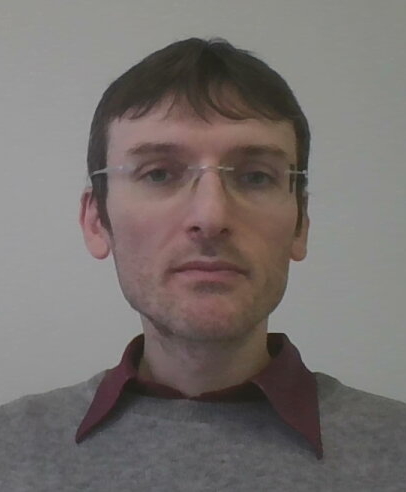
Bio:
Dr. Antonio Posa is currently a Research Scientist at the National Research Council of Italy, Institute of Marine Engineering (CNR-INM). After gaining a Doctorate in Fluid Machinery Engineering at Politecnico di Bari in 2010, he worked as Faculty Research Assistant at the University of Maryland between 2010 and 2011 and as a Post Doctoral Scientist at The George Washington University between 2012 and 2016. In 2017 he moved to the National Research Council of Italy as a Senior Research Fellow. Since November 2022 he is a Research Scientist at CNR-INM. He developed more than 15 years of experience dealing with the numerical simulation of turbulent, engineering flows by parallel computing in HPC environment, relying on Large-Eddy Simulation. His activity was developed in the framework of projects funded by the Office of Naval Research of the US Navy, the National Science Foundation of the United States and the European Union as well as through internal grants from the University of Maryland, College Park, and The George Washington University, Washington DC. During the last years at CNR-INM his activity was especially focused on the study of the wake of marine propellers, axial-flow and cross-flow rotors by using high-fidelity simulations through massively parallel computations.
Abstract:
The wake of a system consisting of a propeller and a downstream hydrofoil, mimicking a rudder, is investigated through Large Eddy Simulation and an Immersed Boundary method, relying on a cylindrical grid consisting of about 4 billion points. Comparisons between infinite and semi-infinite approximations of the hydrofoil are presented, to shed light on the influence of its end effects on the wake properties of the system. The results of the computations show that this influence is practically negligible when the hydrofoil works at zero incidence. In contrast, increasing incidence angles result in substantial deviations between the two approximations of the geometry of the rudder, especially for angles large enough to produce separation on the suction side of the hydrofoil. In the case of the infinite hydrofoil, massive separation phenomena propagate from outer to inner radial coordinates, relative to the axis of the propeller wake. In contrast, the wake of the semi-infinite hydrofoil at large incidence angles is dominated by two vortices, coming from the roll-up of vorticity from its bottom end, due to the pressure gradient between the port and starboard sides. As a result, while in the case dealing with the infinite approximation of the rudder the highest turbulence levels populate the region of shear between the wake of the propeller and that of the hydrofoil, reinforced by the onset of separation phenomena, in the case of the semi-infinite approximation turbulence is promoted especially by the shear between the tip vortices shed from the end of the hydrofoil and those coming from the tip of the propeller blades, which roll-up around the former.
23 January 2024
Mechanics-guided 3D assembly of electronic devices and microsystems
Date: 27th February 2024
Presenter: Prof. Yihui Zhang, Tsinghua University, Beijing, China
Host: Prof. Jianliang Xiao, University of Colorado Boulder, Colorado, USA
Email Prof. Yihui Zhang with your questions at yihuizhang@tsinghua.edu.cn

Bio:
Yihui Zhang is a Professor of Engineering Mechanics at Tsinghua University. His group (http://yihuizhang.org/) is dedicated to addressing the grand challenges in the frontiers of science and technologies through creative uses of mechanics principles and cross-fertilization among diverse disciplines, which drives the development of new mechanics theories and computational models of advanced materials/structures, as well as novel designs and fabrication approaches of materials/devices/systems with unprecedented properties and functionalities. His current research interests include mechanically guided 3D assembly, soft architected materials, and mechanics of flexible structures. He has published > 170 peer-reviewed journal papers, including, 4 in Science, 1 in Nature, 12 in Science sister journals, 15 in Nature sister journals, 2 in NSR, 8 in PNAS, 15 in JMPS (the best solid-mechanics journal), 13 in Advanced Materials, among others, as of November 2023. He is an inventor on 9 China patents and 3 US patents. Dr. Zhang is the recipient of several honors and awards, including, ASME Gustus L. Larson Memorial Award (2022), NSFC National Science Fund for Distinguished Young Scholars (2022), Clarivate Highly Cited Researcher (2020, 2022 & 2023), The Xplorer Prize (2021), ASME Thomas J.R. Hughes Young Investigator Award (2019), Society of Engineering Science’s Young Investigator Medal (2018), ASME Sia Nemat-Nasser Early Career Award (2018), Eshelby Mechanics Award for Young Faculty (2017), ASME Melville Medal (2017), Journal of Applied Mechanics Award (2017), Qiu Shi Outstanding Young Scholar Award (2016), and MIT Technology Review's 35 Innovators Under 35 (Global) (2016). He is an editor of Mechanics of Materials, an associate editor of Science Advances, Research, and International Journal of Smart and Nano Materials, a past associate editor of ASME Journal of Applied Mechanics, and serves on the editorial board of several other academic journals.
Abstract:
3D micro-/nano-structures have widespread applications in a broad spectrum of cutting-edge areas, such as bio-integrated electronics, microrobots, among others. Existing approaches of 3D assembly/fabrication to form such micro-/nano-structures, however, can only be used directly with a narrow range of materials and/or 3D geometries. A grand challenge in the field is in the development of schemes that allow construction of 3D structures in device-grade crystalline inorganic materials essential for high-quality electronic systems and MEMS. In this talk, I will introduce a mechanics-guided assembly approach that exploits controlled buckling to construct complex 3D micro/nanostructures rapidly from patterned 2D micro/nanoscale precursors. This approach applies to a broad set of materials (e.g., semiconductors, polymers, metals, and ceramics) and even their heterogeneous integration, over a wide range of length scales (e.g., from 100 nm to 10 cm). Development of a rational microlattice design allows transformation of 2D films into programmable 3D curved mesosurfaces through this assembly approach. Analytical modeling and a machine learning–based computational approach serve as the basis for shape programming and determine the heterogeneous 2D microlattice patterns required for target 3D curved surfaces. The compatibility of the approach with the state-of-the-art fabrication/processing techniques available in semiconductor industries, allow transformation of diverse existing 2D microsystems into 3D configurations, providing unusual design options in the development of fundamentally new devices. I will introduce a few examples of unusual bioelectronic devices and bioinspired microrobots enabled by the mechanics-guided 3D assembly.
10 December 2023
Single-particle dynamics in a low-Reynolds-number fluid under spherical confinement
Date: 16th January 2024
Presenter: Dr. Xikai Jiang, Associate Professor at the Institute of Mechanics, Chinese Academy of Sciences (CAS), China
Host: Prof. Rui Zhang, Hong Kong University of Science and Technology, Hong Kong
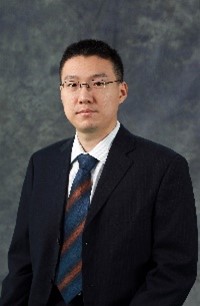
Bio:
Dr. Xikai Jiang is an Associate Professor in the Institute of Mechanics, Chinese Academy of Sciences (CAS). Before joining CAS, Dr. Jiang was a postdoctoral researcher at the University of Chicago and Argonne National Laboratory working with Prof. Juan J. de Pablo. A member of the Micro/nanofluidics Group in the State Key Laboratory of Nonlinear Mechanics, Dr. Jiang is interested in studying transport phenomena in micro/nanofluids at multiple scales using numerical simulations. Specific research areas include particulate transport in low-Reynolds-number fluids and ionic transport in room-temperature ionic liquids. He has published papers in journals such as J. Fluid Mech., J. Phys. Chem. Lett., J. Chem. Phys., and ACS Nano, and developed Continuum-Particle Simulation Software as a core developer. His recent work was supported by the Young Elite Scientists Sponsorship Program by the Chinese Society of Theoretical and Applied Mechanics and the CAS International Collaboration Program.
Abstract:
Non-colloidal dynamics of a single particle suspended in a low-Reynolds-number fluid under spherical confinement was studied numerically. We calculated hydrodynamic mobilities of a sphere, a prolate spheroid and an oblate spheroid parallel and transverse to the particle-cavity line of centres. The mobilities show maximum in the cavity centre and decay as the particle moves towards the no-slip wall. For prolate and oblate spheroids, their mobilities are also affected by the angle between the particle's axis of revolution and the particle-cavity line of centres due to particle anisotropy. It was observed that the effect of particle anisotropy becomes stronger as the confinement level increases. When the external force on the particle is not parallel or transverse to the particle-cavity line of centres, a drift velocity perpendicular to the force occurs because of the confinement-induced anisotropy of the mobility in the cavity. The normalized drift velocity depends on the particle location, size, shape and orientation of the non-spherical particle. We also studied the motion of a non-neutrally buoyant particle under external forces in a rotating flow inside the cavity. Cooperation between the external force, rotation-induced centrifugal or centripetal force and the force from particle-wall interactions leads to multiple modes of particle motion. A fundamental understanding of single-particle dynamics in this work forms the basis for studying more complex particle dynamics in intracellular transport, and can guide particle manipulation in microfluidic applications ranging from droplet-based microreactors to microfluidic encapsulation.







 Submit a Paper
Submit a Paper

